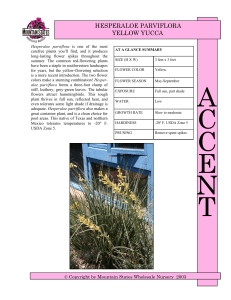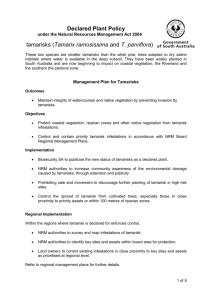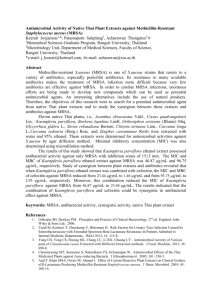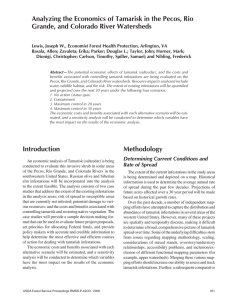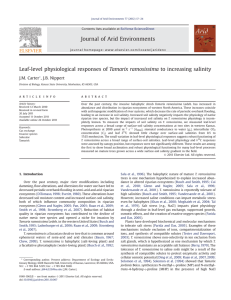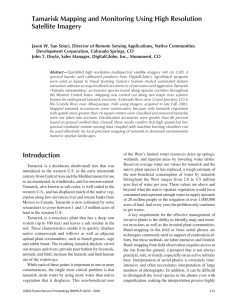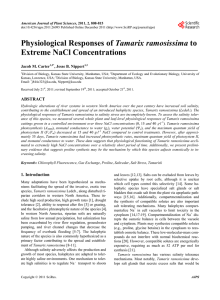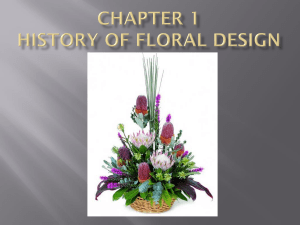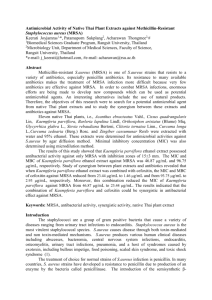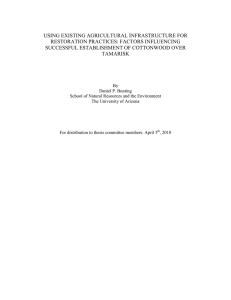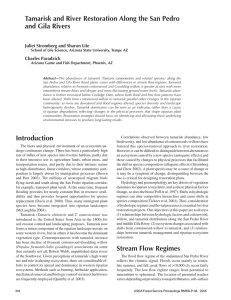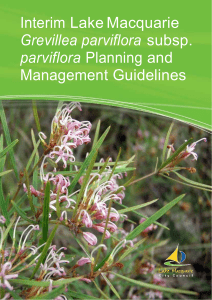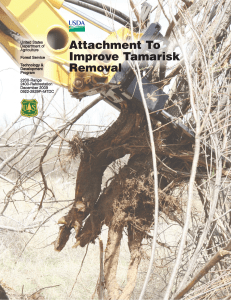declared plant
advertisement
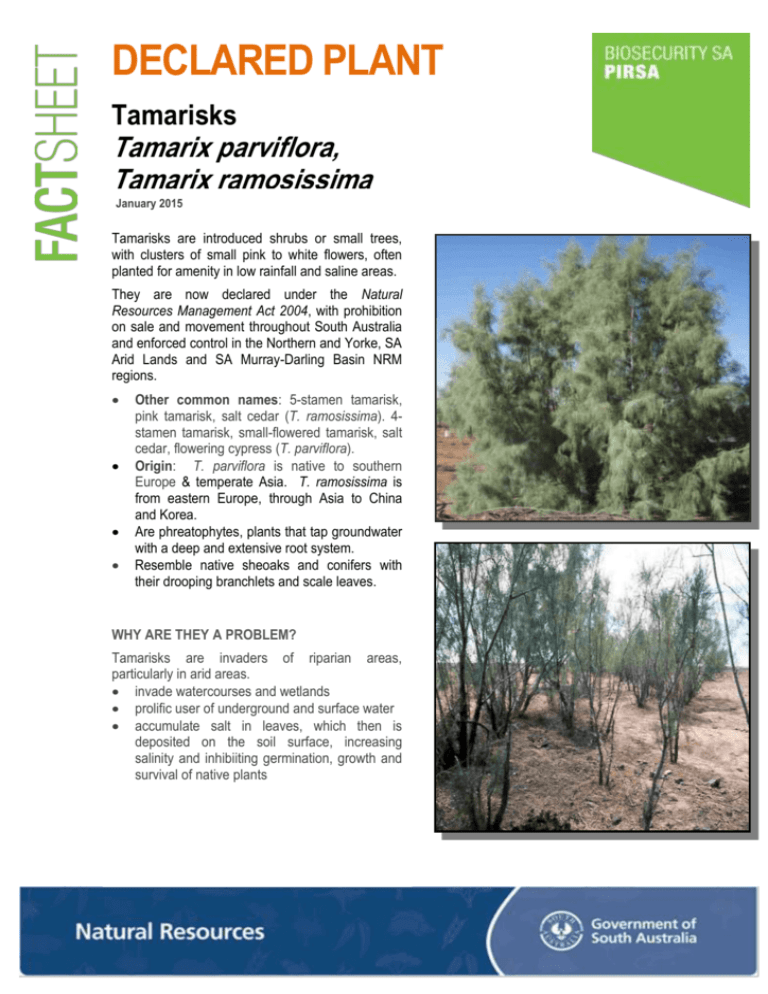
DECLARED PLANT Tamarisks Tamarix parviflora, Tamarix ramosissima January 2015 Tamarisks are introduced shrubs or small trees, with clusters of small pink to white flowers, often planted for amenity in low rainfall and saline areas. They are now declared under the Natural Resources Management Act 2004, with prohibition on sale and movement throughout South Australia and enforced control in the Northern and Yorke, SA Arid Lands and SA Murray-Darling Basin NRM regions. Other common names: 5-stamen tamarisk, pink tamarisk, salt cedar (T. ramosissima). 4stamen tamarisk, small-flowered tamarisk, salt cedar, flowering cypress (T. parviflora). Origin: T. parviflora is native to southern Europe & temperate Asia. T. ramosissima is from eastern Europe, through Asia to China and Korea. Are phreatophytes, plants that tap groundwater with a deep and extensive root system. Resemble native sheoaks and conifers with their drooping branchlets and scale leaves. WHY ARE THEY A PROBLEM? Tamarisks are invaders of riparian areas, particularly in arid areas. invade watercourses and wetlands prolific user of underground and surface water accumulate salt in leaves, which then is deposited on the soil surface, increasing salinity and inhibiiting germination, growth and survival of native plants DESCRIPTION Habit: deciduous to semi-deciduous, multi-stemmed large shrubs or small trees, 1-6 m high. Stems: bark on saplings and stems of T. ramosissima is reddish-brown and on T. parviflora is brown to deep purple. Leaves: reduced to scales covering the branchlets. T. ramosissima rhombic to ovate, pointed to gradual tapering, 1.5-3.5 mm long growing closely to the branches. T. parviflora has lanceolate acuminate leaves which thicken towards the base. Flowers: T. parviflora is distinguished by its 4-petalled pinkish-white flowers, while T. ramosissima has 5-petalled pinkishwhite to purple flowers. Fruit: all species have small, pointed capsules with 3-5 valves, containing numerous tiny seeds, tufted to aid spread by wind. HOW THEY SPREAD Tamarisks increase slowly by vegetative spread, but can spread long distances when root and branch fragments are moved by floods or machinery. The seeds are dispersed by wind, water and human activity. They only stay viable for a week, but can germinate in large numbers if seed fall coincides with favourable conditions. HABITAT Found in coastal vegetation, arid watercourses and semi-saline swamps. DISTRIBUTION For more information Contact your local Natural Resources Centre for information on controlling declared weeds: www.naturalresources.sa.gov.au Further weed control information is also available at: T. ramosissima occurs in the Murray, Yorke Peninsula, Southern Lofty and South East regions. It is also naturalised in New South Wales and Victoria. T. parviflora occurs in the Flinders Ranges, Eyre Peninsula, Northern and Southern Lofty, and Murray regions. It is also naturalised in Western Australia. WHAT CAN YOU DO? Seek control advice if you have this plant as a weed. Select alternatives to invasive garden plants. Read ‘Grow Me Instead’ for suggestions. www.pir.sa.gov.au/biosecuritysa Disclaimer: This publication is provided for the purpose of disseminating information relating to scientific and technical matters. The Government of South Australia does not accept liability for any loss and/or damage, including financial loss, resulting from the reliance upon any information, advice or recommendations contained in the publication. The contents of this publication should not necessarily be taken to represent the views of the participating organizations.
